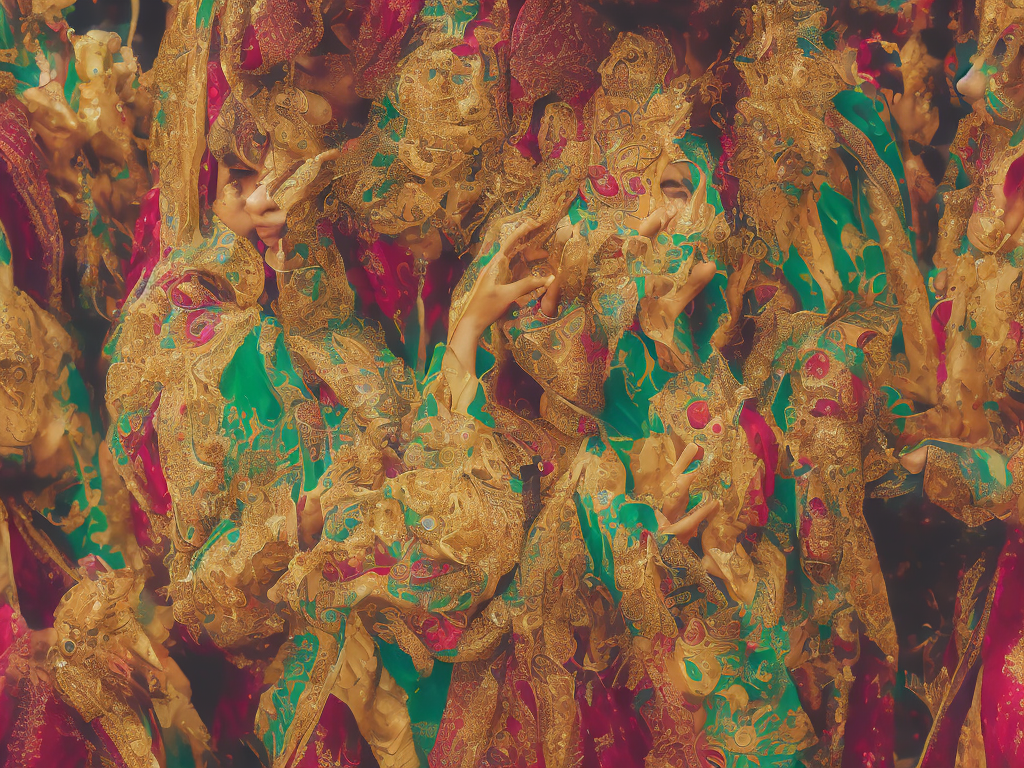
Eid and Bakrid are two important festivals celebrated by Muslims worldwide. While both festivals hold immense significance in Islamic culture, they are distinct from each other in terms of their origins, rituals, and practices. In this article, we will explore the difference between Eid and Bakrid, shedding light on these two splendid celebrations.
Eid, also known as Eid al-Fitr or the Festival of Breaking the Fast, marks the end of the holy month of Ramadan. Ramadan is a time of fasting, prayer, and self-reflection for Muslims around the world. It is believed to be the month in which the first verses of the Quran were revealed to Prophet Muhammad. Fasting during the month of Ramadan is one of the Five Pillars of Islam and is obligatory for all adult Muslims, with exceptions for those who are ill, pregnant, breastfeeding, traveling, or menstruating.
The celebration of Eid is truly a joyful occasion for Muslims. It is a time when families and friends come together to break their fast and share in the blessings and happiness. The day begins with a special prayer called Salat al-Eid, which is performed in congregation at mosques or open prayer grounds. This prayer is a unique aspect of Eid and is performed only on this day.
Eid is known for its delicious and diverse cuisine. Families prepare a wide variety of traditional dishes and sweets to celebrate the occasion. Some of the popular dishes include Biryani, Kebabs, Haleem, and Sheer Khurma. These mouthwatering delicacies are prepared with love and are shared with neighbors, friends, and relatives.
The concept of giving and receiving gifts is also associated with Eid. It is customary for Muslims to exchange gifts with their loved ones as a way of expressing love and gratitude. Children, in particular, eagerly await this time of the year as they receive new clothes and toys from their parents and elders. This tradition strengthens familial and community bonds and promotes compassion and generosity.
On the other hand, Bakrid, also known as Eid al-Adha or the Festival of Sacrifice, commemorates the willingness of Prophet Ibrahim to sacrifice his son, Ismail, as an act of obedience to God. According to Islamic belief, Prophet Ibrahim’s devotion was tested by God, who commanded him to sacrifice his son. However, just as Prophet Ibrahim was about to carry out the sacrifice, God replaced Ismail with a lamb, thus sparing his life.
Bakrid is celebrated on the 10th day of Dhu al-Hijjah, the last month of the Islamic lunar calendar. It is a time when Muslims undertake the pilgrimage known as Hajj to the holy city of Mecca in Saudi Arabia. However, for those who are unable to go on the pilgrimage, Bakrid holds great significance as well.
The primary ritual of Bakrid is the sacrifice of an animal, usually a goat or sheep, as an act of devotion to God. This act symbolizes Prophet Ibrahim’s willingness to sacrifice his son and shows Muslims’ commitment to follow the commandments of God. The meat from the sacrificed animal is then divided into three parts: one-third is shared with the family, one-third is distributed among friends and relatives, and one-third is given to the less fortunate and those in need.
Bakrid promotes the spirit of sharing and giving. Muslims are encouraged to support the less fortunate by providing them with food, clothing, and other necessities. This act of charity and compassion reflects the core values of Islam and strengthens the bonds of brotherhood and unity within the community.
In contrast to Eid, Bakrid does not have specific prayers associated with it. However, Muslims gather in mosques and prayer grounds to offer a congregational prayer called Salat al-Eid. This prayer is performed with a special intention in remembrance of Prophet Ibrahim and his willingness to sacrifice his son. The prayer is followed by sermons delivered by scholars, who emphasize the importance of sacrifice, obedience to God, and the significance of helping others.
Another significant difference between Eid and Bakrid lies in their symbolism. Eid al-Fitr represents the end of fasting and self-reflection during Ramadan. It is a celebration of gratitude and joy for having successfully completed the month of Ramadan. On the other hand, Eid al-Adha symbolizes sacrifice, obedience, and submission to the will of God. It reminds Muslims of the importance of placing their faith and devotion above all else.
In conclusion, while Eid and Bakrid are both celebrated with great enthusiasm and joy by Muslims worldwide, they hold distinct meanings and rituals. Eid al-Fitr marks the end of Ramadan, with special prayers and feasting, while Eid al-Adha commemorates Prophet Ibrahim’s willingness to sacrifice his son and involves the ritual of animal sacrifice. Both festivals promote love, compassion, generosity, and unity among Muslims, fostering a sense of community and faith.
 Self-Instruct
Self-Instruct